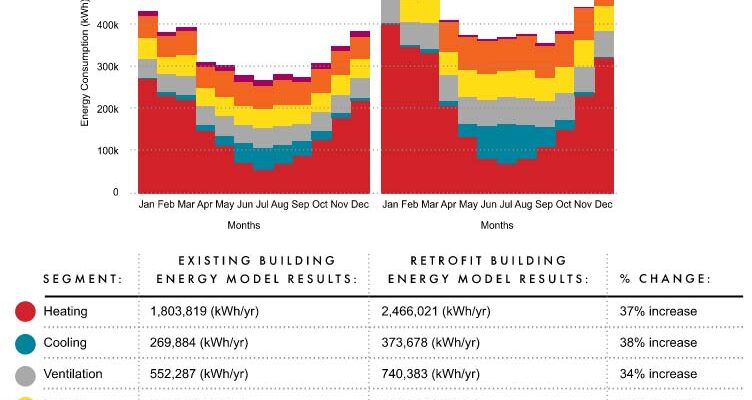This article focuses on sustainable design considerations and strategies for achieving a high-performance retrofit of an existing higher-education laboratory building, located in a cold climate. The primary objective was to evaluate the present state and potential retrofit strategies to improve building performance. Research methods included analysis of archival data and empirical data, and computational software modeling and simulations.Using original construction drawings and current state photographs, a full 3D BIM model was developed for analysis and energy simulations. Also, actual energy consumption data was collected for of three years. Building’s formal and spatial qualities were analyzed and then, the building’s response to environmental conditions was evaluated using Revit and Insight 360 simulations. Next, the thermal and moisture resistance performance of a typical façade system was evaluated using WINDOW, THERM, and WUFI software programs. Lastly, a full-building energy simulation was conducted using Sefaira software and compared against actual energy consumption data to evaluate building performance. Results were used to inform proposed retrofit solutions, spatially and formally, which were evaluated using the same sequence of simulation software and quantitatively compared to assess improvement in building performance. Lastly, potential renewable sources of energy were evaluated and suggested as means to further reduce the environmental impact of the retrofit solution’s energy consumption. The existing building drastically underperforms in all evaluated criteria. However, for a building typology that heavily relies on energy-intensive mechanical systems, the sequential process of simulations used in this case study (which are typically utilized to inform design decisions of new buildings), was a useful method by which to quantitatively maximize the use of passive systems and reduce the supplemental energy needs by active systems.
This article originally appeared in Vol 14.01 of the Perkins&Will Research Journal. CLICK HERE to see the whole article.

